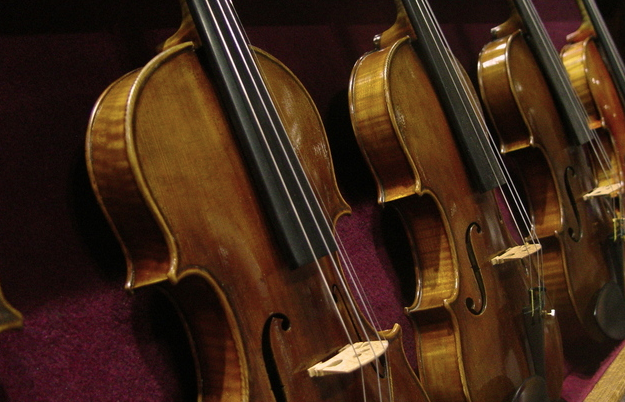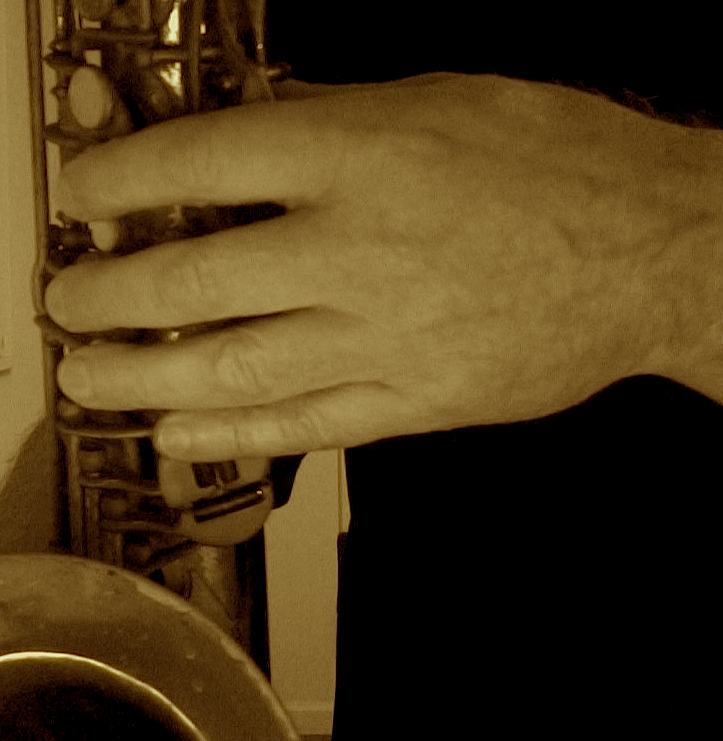“Some of my favorite saxophonists don’t play saxophone.” I remember saying that once, some years back, when I was being interviewed on a radio show. The host asked me a simple question, “Who are some of your favorite saxophonists?” This is a logical question to ask a saxophonist (me). But truth be told, at that point in my life, I wasn’t much influenced by other saxophonists. (My answer was quite spontaneous and sincere.)
I was more interested in listening to guitar players. I was crazy about a wide spectrum of improvisational guitar playing: Jimi Hendrix, Ralph Towner, Nels Cline, Wes Montgomery, Django Reinhardt, Jim Hall, Mike Stern, Derek Bailey, Charlie Christian, John Abercrombie, and many, many more. ( I still love this music!)
At that time I was listening to a large variety of music, and certainly a fair amount of that music involved the saxophone. But I continually gravitated toward the guitarists. You might be wondering why I just didn’t switch from playing saxophone to guitar. But truth be told, I wasn’t interested at all in playing guitar.
I was drawn to many of these guitarists because they played their instruments in such a way as to inspire me to think differently about playing the saxophone (my true love!) The first time I heard Mike Stern play, for example (with Miles Davis), I thought, “Now that’s how I want to play the saxophone!” The way Stern was thinking about his sound, organizing his melodic ideas, and using space and density was markedly different than any saxophonist I’d ever heard.
It was easy for me to imagine that coming out of a saxophone, spelling out a whole new musical language for the instrument.
Fortunately for me, I didn’t scrutinize and imitate his music. This is always a great temptation. We hear somebody who has really “solved” the musical problems we’ve been considering, with great clarity, originality and stunning self-expression. Why not just do what they did?
Well, I won’t digress here as to why that’s not a good idea. Suffice it to say that the whole point of this creative process is to solve the problems in your own way. That’s where the beautiful music comes from.
It’s not hard to understand why guitarists think differently than saxophonists: They play a different instrument. They have different challenges, limitations, possibilities, physical requirements, etc. They think and function within the world of the guitar. No matter what, part of what influences their creative thinking is the nature of their instrument.
And so it is for all instrumentalists. Because of this you have saxophonists listening to a disproportionate amount of saxophonists, as do you have guitarists listening to a disproportionate amount of guitarists, and so on with all instrumentalists.
There’s nothing wrong with that, for the most part. After all, you learn what your instrument can do. You learn about sound, articulation and other aspects of technique. You learn the history of the improvisational language as told through your instrument. All of this is good. It creates a context through which to explore and grow.
But if you really want to start thinking about your instrument in a different way, in a more expansive way, you might consider carefully listening to and studying musicians who play (or sing) an instrument other than your own.
I remember once talking to the great tenor saxophonist, Bennie Wallace, about his influences. He was sort of amused that many critics compared his playing to Eric Dolphy’s, because Bennie’s improvisational language involved the use of “wider than usual” intervals (as did Dolphy’s).
But Bennie never really listened to Dolphy (although he greatly respected him). Instead, Bennie became highly inspired in his saxophone playing because of the way Thelonious Monk played piano. Bennie didn’t copy Monk, but he was led to think and imagine (through careful observation of Monk’s music) of an entirely different way of playing the saxophone.
Interestingly enough, Bennie was influenced by the sound that Monk could get on the piano (which was due in a large part to Monk’s more “vertical” conception of tonal organization throughout his instrument).
When I think of the greatest tenor saxophone sound I aspire towards, it’s the sound of Johnny Hartman’s singing voice. (Yes, I know he’s a baritone, not a tenor). Listening to him sing has influenced my thinking about the sound of the saxophone more than any saxophonist ever has. Again, I don’t try to imitate him. It’s just that I imagine that concept through the tenor saxophone. Flutist James Newton also has a sound that has deeply opened up my own conception of the tenor saxophone sound, as has the sound of Elvin Jones’ drumming and Bill Evan’s piano playing.
Sometimes it’s a good idea to think far outside of the world of your instrument. Let go of the “trumpet-isms”, “piano-isms”, “guitar-isms”, or whatever kind of “isms” you might hold on to.
Becoming inspired by another instrument can help you to imagine the “impossible” on your instrument, and make it possible. (Sometimes the “impossible” is nothing more than a limited imagination and the unwillingness to carry out a new idea to fruition.)
So see if you can find an instrumentalist or singer that really inspires you. Listen…frequently, mindfully, openly, joyfully. Try to imagine their sound, their conception, coming through your instrument. At the very least, you’ll deepen your listening skills and imagination. You might even open up your creative world in a huge and unexpected way.


